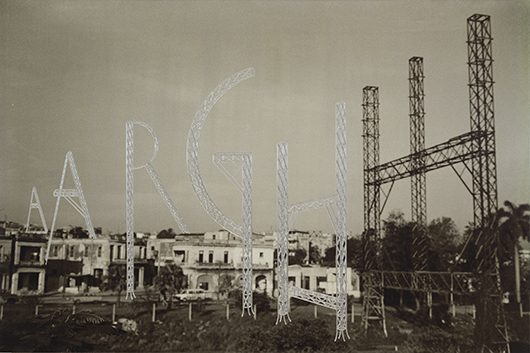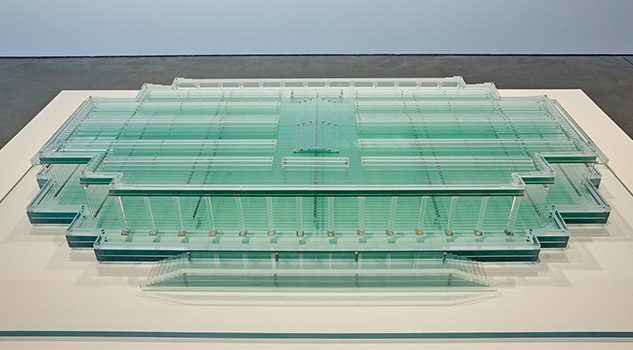Carlos Garaicoa (b.1967, Havana) has been a part of the international art world since the mid-1990s. His hometown of Havana often serves as the foundation in much of his artwork. The city’s architecture and infrastructure, greatly in ruins due to the Cuban economic deadlock, serve as models for sculptures and installations. Actual buildings and housing complexes are built on and altered through make-believe, imaginary additions.

To Transform the Political Speech in Facts, Finally (2009) is a series of photographs of particular buildings and urban settings in Havana. By drawing on the photographs themselves, the artist shows us how the buildings could have developed if construction on them had been completed. The series is paradoxical in that it displays ruins, a frozen time in history, and a vision of a future community. The photographs deal with nostalgia of both something lost and of future dreams – the desire to develop, a dilemma faced by many contemporary cities. Should we build upon and restore old city centres, or build from the ground up? The questions posed by Garaicoa’s art also level critique at utopian constructions from different eras, those that nowadays seem dated. By using existing constructions, he reflects upon the blind spots in contemporary city development debates.
My personal Library Grows up Together with my Political Principles (2008) and Prêt-à-Porter (2011) are two city models constructed out of ordinary, everyday objects. Utilizing paper lanterns and sewing implements, Garaicoa materializes his thoughts and ideas of constructed environments. The artwork always reaches a point where it relates to the artist’s own experience of a city, place, or building, as Garaicoa points out the importance of experiencing both the “soft and hard aspects of a city.”
